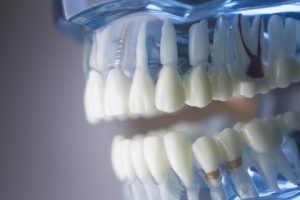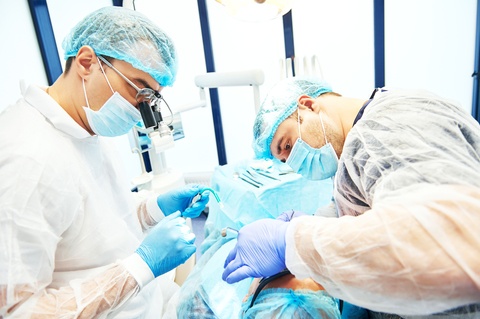What is Oral and Maxillofacial Surgery?
Oral and maxillofacial surgery is the medicinal branch of treating complex dental and medical issues related to the teeth and the face. Oral refers to the mouth, while maxillofacial refers to the face. Oral and maxillofacial surgeries range from simple tooth extractions to complex surgical procedures associated with the jaws, teeth, and soft tissue. Read further to deeper understand oral and maxillofacial surgery.
This procedure is conducted by oral and maxillofacial surgeons, who are considered board-certified dental specialists. Oral and maxillofacial surgery involves different minor and invasive procedures that include surgery of the jaw, face, and mouth. People who do not understand what exactly oral surgery is, and link it to maxillofacial surgery tend to think of this field as an improved form of dental surgery. However, under scrutiny, the truth is that oral and maxillofacial surgery expands beyond what an ordinary dentist can do.
It is important to note that oral and maxillofacial surgeons are not medical doctors. They do not perform a medical exam to determine whether or not a patient has an appropriate medical history. They only perform procedures based on the diagnosis they make after an exam.
Basically, dental oral surgery is the assessment and implementation of corrective measures in the mouth to correct undesirable parts, for example, impacted or missing teeth.
Qualifications of Oral and Maxillofacial Surgeons
These surgeons require up to 15 years of surgical training and dental school to become qualified surgeons. This includes 2-4 years of undergraduate study, and four years of dental study. They must complete six years of training at a residency program, including two extra years to earn a medical degree.
The majority of maxillofacial surgeons have set up a private practice, while others work in hospitals full-time or at local dentist offices. Other oral and maxillofacial surgeons do further training to;
- Perform microvascular surgery of the neck or head.
- Perform facial cosmetic surgery.
- Treat cancer-related conditions.
- Correct congenital skull and face abnormalities in kids, for instance, cleft lip and palate.
What Are the Different Types Oral and Maxillofacial Surgical Procedures?
 There are several types of oral and maxillofacial surgery, for instance, wisdom teeth removal, tooth extractions and dental implants. Common reasons patients need oral and maxillofacial surgery include trauma, disease, tooth loss, dental caries, accidental injury, periodontal issues, and deformities. The common surgical treatments include;
There are several types of oral and maxillofacial surgery, for instance, wisdom teeth removal, tooth extractions and dental implants. Common reasons patients need oral and maxillofacial surgery include trauma, disease, tooth loss, dental caries, accidental injury, periodontal issues, and deformities. The common surgical treatments include;
- Wisdom teeth removal (third molars).
- Dental implants – artificial tooth roots and crowns inserted to replace missing or damaged teeth.
- Reconstructive jaw surgery – corrective jaw surgery used to fix soft tissue problems caused by injuries or fix facial trauma.
- Temporomandibular Joint Dysfunction (TSD) – for this condition, the dental surgeon must perform arthrocentesis surgery, which washes out the temporomandibular joint using sterile fluid.
- Cleft lip and palate – this is usually a congenital disability that can be repaired using craniofacial surgery. The surgery repairs the palate or lips, and is advisably done when the patient is aged six to twelve months.
- Orthognathic Surgery – corrects jaw deformities and discrepancies.
- Sleep apnea surgery.
Some oral and maxillofacial surgeons specialize in certain types of injuries. For example, those who work in plastic surgery clinics often have extensive training in facial reconstructive plastic surgery, craniofacial surgery, liposuction, or facial implants. These oral and maxillofacial surgeries are performed under the care of an experienced anesthesiologist.
What Are the Risks of These Surgical Procedures?
Yes, it does, just like any other surgery. Even the simplest and most common procedures come with dangerous risks to them. The risk is especially narrowed greatly to those seeking reconstructive surgery or suffer facial trauma. Such risks include;
- Condensing osteitis – jaw bone inflammation characterized by pain with movement.
- Undesired changes in facial appearance.
- Change in the alignment of the jaw and bite.
- Alveolar osteitis – the absence of blood clotting during tooth extraction, preventing the area to heal.
- Change in airflow via the nose and also sinuses.
- Facial nerve injury – leads to extreme nerve pain, numbness, and impairment of facial muscle control.
- Tissue death.
The oral maxillofacial surgery procedures are categorized into;
- Diagnostic/therapeutic. This category is further divided into various procedures that include;
- Mandibular joint surgery – the repositioning of the jaw to mend TMJ disorders.
- Maxillomandibular osteotomy – the shifting of the upper jaw and the lower jaw forward to correct sleep disordered breathing.
- Radiofrequency needle ablation – the heating up of nerve tissue from a radio wave to decrease pain signals in a specific area.
- Tumor resection – the surgical extraction of abnormal masses and growths.
- Dentoalveolar. These procedures include;
- Orthognathic surgery – the correction of problems of the face and jaw related to skeletal structure, abnormal growth, snoring, TMJ problems, sleep apnea and other orthodontic problems and facial disorders.
- Dental implant surgery – the replacement of tooth roots and damaged or missing teeth with metal posts and artificial teeth.
- Wisdom tooth extraction – the removal of one or more of the four adult teeth that are permanently positioned at the bottom and top corners in the back of the mouth.
- Pre-prosthetic bone grafting – the expansion of the bony ridge of the jaw by attaching additional bone material.
- Reconstructive. The procedures include;
- Craniofacial surgery – the correction and reconstruction of problems with the jaws, face, neck, skull, head and related structures.
- Lip reconstructive surgery – the repair of the lip deformity resulting from trauma or surgery.
- Microvascular reconstructive surgery – the reconnection of small blood vessels to restore blood circulation during reconstruction of tissue defects of the face, neck and head.
- Skin grafts and flaps – the transplantation of skin to repair and improve function, and also appearance of areas of skin.
- Cosmetic procedures, which include;
- Rhinoplasty (nose job)
- Blepharoplasty (eyelid surgery)
- Cheek implants
- Neck liposuction
- Hair transplant
- Rhytidectomy, which is a facelift.
- Genioplasty and mentoplasty – the reshaping of the chin.
- Otoplasty – the modification of the outer ear shape.
In Conclusion
In general, oral and maxillofacial surgery deals with the aesthetics of the face and oral health. A trained and qualified surgeon should be able to diagnose the problem, and implement the required treatment properly. It is a esteemed field of medicine due to the amount of time invested in training to become a specialist.
The post Oral and Maxillofacial Surgery: Types, Benefits, and Potential Risks appeared first on GQ Central.


Comments are closed